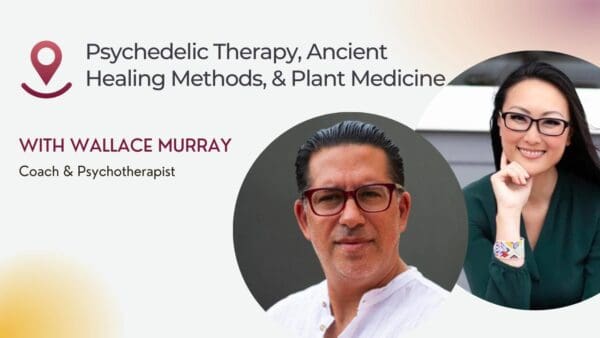Psychedelic Music
When thinking of psychedelic music, the first thing that might come to mind is The Grateful Dead or even The Beatles in their post-LSD years. For others, psychedelic music might bring to mind modern Trance or the multitude of electronic sub-genres that travel festival circuits.
But, there’s a lot more to psychedelic music than what is most culturally popular. Even as far back as 1967, researchers like Helen Bonny and Bill Richards were curating playlists on vinyl, and eventually cassette, for use in psychedelic therapy.
Because music plays such a critical role in psychedelic therapy, and because musical preference is subjective, creating a perfect playlist for your trip might take a little practice.
Here are a few suggestions on how to curate the best music for psychedelic experiences.
How Psychedelic Music Works
To understand the role that music plays in psychedelic trips, one need only consider how critical the icaro song or chant is within the traditional ayahuasca ceremonies throughout the Amazon Basin. Author Armando Loziaga Pazzi compared the icaro songs to “the oars of a canoe, without which the canoe would be at the mercy of the river.” The icaro serves as a way to facilitate visions for participants and as a way to keep them safe from negative energies.
Healers frequently use unique songs and chants, consistent drum beats, rattles, and whistles in traditional ceremonies. Researchers are working to understand the effects of music on psychedelic healing. In her research, Dr. Susana Bustos noted that the psychedelic trip’s success does not depend on the music or the healer but the “receptivity on the part of the client.”
In one study involving psilocybin, therapists reported using several different musical stimuli during various parts of their clients’ trips, specifically during the onset and rise of the experience, the peak period, and the post-peak period.
According to the study, therapists have shared ideas about the best music for peak experiences: regular and predictable structure with continuous instrumentation that builds slowly over time. Therapists noted that unpredictable or jarring musical selections could leave the patient with a sense of uncertainty that might be uncomfortable, making it less likely to drop into the desired mystical experience.
A final thought: An entire field of psychedelic music therapy may yet emerge. Outside of psychedelic clinical trials, music has been shown to help support patients living with a cancer diagnosis, which could be particularly important for psychedelic therapy — already known to be beneficial for treating end-of-life-anxiety in cancer patients. Additionally, music therapy effectively treats PTSD in military veterans, and so too is psychedelic therapy in treating Special Operations Forces Veterans. This research area is of unique interest to many, and researchers are not the only ones who can create psychedelic playlists.
What Music Should I Trip To?
Let’s start with the basics: It is impossible to create a standardized playlist that works for everyone. And, it is best to avoid constantly intense and emotional music because it leaves little room for reflection during the trip itself.
Clinical trials for psychedelic therapy tend to use a lot of classical music in their studies because they find that this music helps to anchor or ground the participant while also allowing for evocative, propelling emotion. Music-related feelings, however, tend to be more related to a person’s past experiences and cultural associations. In other words, people tend to have more significant physiological reactions to musical structures they are more familiar with.
Words can be distracting or disorienting, and sticking to instrumental music for psychedelics can help enhance responses to the experience, specifically feelings of wonder, transcendence, power, and tenderness.
Music enhances all emotional responses, both welcome and undesirable, so it is important to consider the underlying response you have to a particular song — maybe it’s not the best to listen to things that bring up emotional baggage. However, if you’re in a supportive, therapeutic environment with a trained practitioner, perhaps that is precisely what you want to listen to.
Overall, researchers are now trying to figure out how to account for the fact that people arrive with different stereotypes toward a musical genre and that these stereotypes impact a person’s emotional response. Research shows that non-drug factors such as loud music can negatively impact MDMA toxicity in mice. Another study reveals that Western classical music is not necessarily unique or more beneficial in terms of therapeutic potential.
The Best Playlists for Psychedelics
If you want some inspiration from the experts, here are several psychedelic playlists to start with.
The Johns Hopkins Psilocybin Research playlist is a common place to start. It offers a series of instrumental and ambient songs that have been developed in cooperation with evolving research studies.
Here is the Imperial College London Psychedelic Therapy Playlist and their substantial study investigating music’s role in psychedelic therapy.
These two playlists from MAPS are curated around MDMA therapy and are available on YouTube here and here.
The Chacruna Institute also has a playlist curated by researcher Kelan Thomas, which you can find here. Thomas says his work was inspired by the artist Robert Rich, famous for his all-night Sleep Concerts and unique music used in lucid-dream research.
Can You Trip On Music Alone?
It should be evident that trance music is not just a modern genre but a nod to the fact that ancient humans long used music to achieve trance states. Seeking altered states of consciousness (ASC) is universal to human cultures — it’s just a matter of how you get there. Psychoactive plants can transport minds into far-off realms, and music is the “primary conditioning agent” of the trip. In the absence of language, music and rhythm are like a heartbeat, a tether to a grounded reality.
As anthropologist Marlene Dobkin de Rios says, “music operates as a “jungle gym” for the person’s consciousness during the drug state,” much like how playground equipment offers children a place for structured but free-form play.
One company in London, Wavepaths, seems to be extending early psychedelic researcher Helen Bonny’s question — could music alone provide a meaningful altered state of consciousness experience? While Helen Bonny eventually created a Guided Imagery and Music (GIM) methodology that trains therapists directly in a structured protocol, Wavepaths places you in an immersive musical experience to try and simulate some of the elements common to a psychedelic trip.
In combining this music and visuals, their website claims to offer “experience as medicine.” Using various sensors, squishy chairs, mood lighting, and an all-encompassing sound system with 25 speakers pointed inward, Wavepaths seeks to create a “soothing cocoon of sound” for the participant and works with psychedelic therapists to support transformational mind states.









